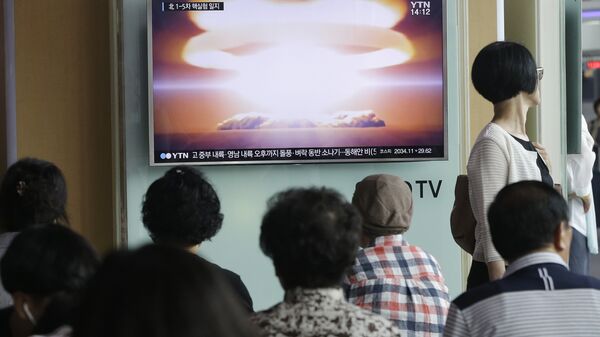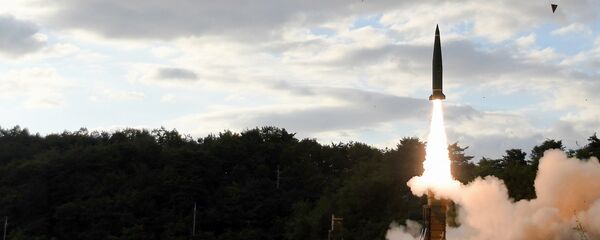"Should another nuclear [test] take place, there is that possibility," Jae-cheol told South Korean lawmakers concerned about possible radioactive fallout on Monday, according to a New York Times report.
Situated in the country's North Hamgyong Province, the mountain, officials say, is starting to show some geological changes that suggest another test could be a disaster. The entire top of Mount Mantap could collapse in on itself — and push nuclear material out into the environment.
According to the New York Times, Pyongyang's September 3 test, also considered the most powerful by officials, produced between 50 and 300 kilotons of explosive energy and triggered a series of tremors, landslides and even underground cave-ins. By comparison the outlet noted that the bombs dropped on Hiroshima were measured at 15 kilotons.
"What we are seeing from North Korea looks like some kind of stress in the ground," Paul Richards, a seismologist at Columbia University's Lamont-Doherty Earth Observatory, told the Washington Post. "In that part of the world, there were stresses in the ground, but the explosions have shaken them up."
— Devi Rhamesz (@ChrliesWarchest) September 14, 2017
Per experts, what Mount Mantap is suffering from isn't exactly unknown. Referred to as "tired mountain syndrome," the condition arises from repeated underground nuclear testing that fractures and weakens rocks, thus creating an unstable area.
"While radioactive material would be released into the environment if the collapse occurred right after a test, the amount of fallout, even from a weapon in the 100 kiloton range, would likely only cause significant contamination in the vicinity of the site and perhaps a few hundred miles downwind," Edwin Lyman, a senior scientist at the Union of Concerned Scientists, told the Times.
"Nevertheless, any amount of radioactive contamination of the environment from North Korea's abhorrent nuclear test program is unacceptable and would add insult to injury," Lyman later added.






